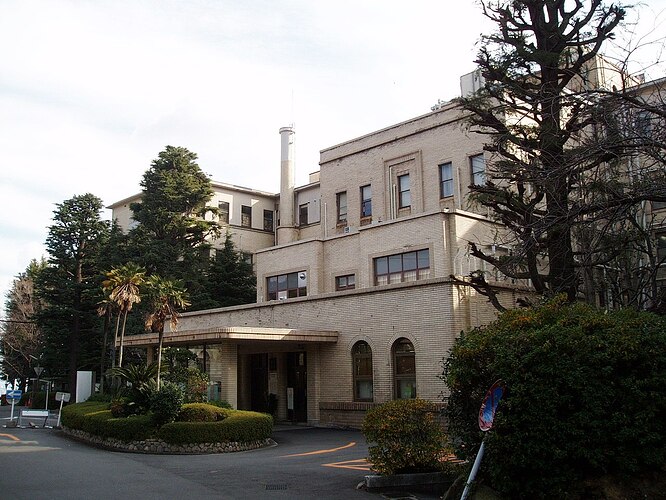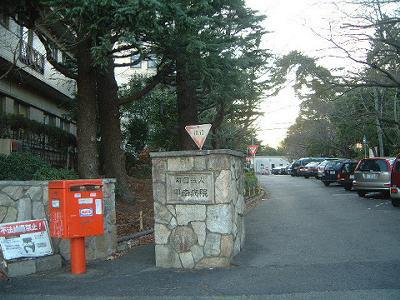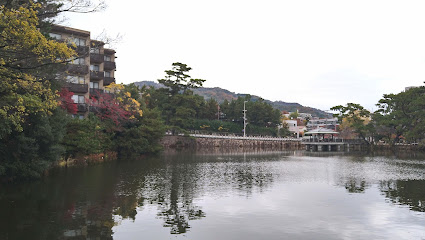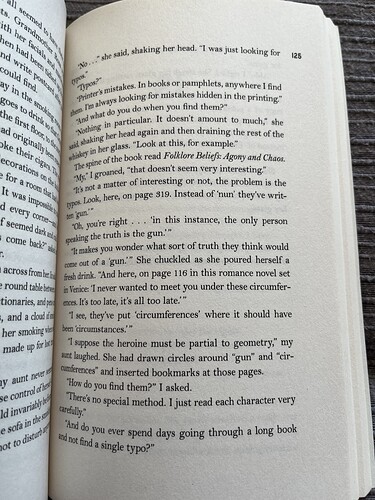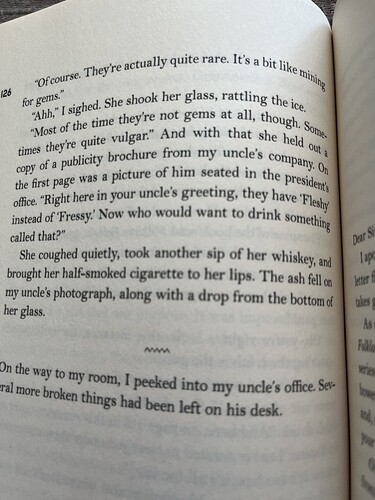Exactly !
I think both ![]() The former is my question, and the latter was yours, iirc…
The former is my question, and the latter was yours, iirc…
OK glad it isn’t only me ![]()
I can’t work out how to make the original post into a wiki, which would make it easier.
If you want to phrase a specific question, I’ll add it to the original post.
Here are some questions that I have noted
- In a number of your stories (the poison in Pregnancy Calendar, the bees in Dormitory. The nature of the disappearances in the Memory Police), there is an unresolved ambiguity about the nature of a central element - is it real, is it in the mind of the characters. Is that ambiguity important to you? In your own mind, when you are writing, do you have a single view about these elements. Or do you too remain unsure about their nature?
- Mina’s matchbox is set in Ashiya - where you currently live or have lived. How is location important in this story?
- Memory appears to be a recurring theme in your books (housekeeper, the memory police). In Mina’s matchbox, memory preserves a world, protects it from change. (LP Hartley - "the past is a foreign country, they do things differently there”)
- The suicide of Yasunari Kawabata has a profound impact on the book loving Mina. Do you remember this event from your own childhood? Did you read Kawabata’s novels at a precocious age (like Mina)? Did you seek to echo any of Kawabata’s novels or writing style in Mina’s matchbox?
You’d need to be a Regular for this. (Or you’d need to ask an admin, and I don’t know who is admin besides Brandon who seems to be absent…)
I’ve created a post in the home thread and turned it into a wiki, maybe you can link to it in the home post?
![]() Actually, I’ve had another look at the Japan Society event, and I have a feeling that I misunderstood/misinterpreted their website (The Japan Society - ONLINE EVENT - The Japan Society Book Club: Mina's Matchbox by Yoko Ogawa ).
Actually, I’ve had another look at the Japan Society event, and I have a feeling that I misunderstood/misinterpreted their website (The Japan Society - ONLINE EVENT - The Japan Society Book Club: Mina's Matchbox by Yoko Ogawa ).
I suspect that Ogawa sensei won’t be appearing at the online bookclub ![]()
So although I’ll certainly join the event (and others are welcome to, too), I don’t think we’ll get to ask her our questions.
(I might see if I can work out a way to send her a message via her agent, and see if she would consider responding to some written questions - but let me work on that…)
I think chances would be much higher if this message was in Japanese, as Ogawa is probably not fluent in English, just like many other Japanese (whether authors or not…) ![]()
Week 8 ミーナの行進! 
(Join the 小川洋子 book club here)
| Week 8 | 14 June 2025 |
|---|---|
| Chapters | 15 and 16 |
| End point (kindle) | 1378 |
| Previous week | Week 7 |
| Next week | Week 9 |
| Home Thread | ミーナの行進 |
Will you be reading along with us this week?
- I’m reading along
- I have finished this part
- I’m no longer reading the book
- I’m reading this book after the club has finished
- I’m still reading the book but I haven’t reached this part yet
Once again, I’m in awe of ミーナ’s storytelling ability.
I don’t care wether サブロウ’s story is real or not : it probably isn’t. But it’s lovely, lovelier than any other possible explanation, and therefore it’s the only one that deserves to be remembered. And now we know that’s why, more or less, ミーナ keeps those matchboxes. She is indeed preserving her universe in them. I only wish there were other matchbox stories : maybe later ?
Two wonderful sentences this week:
chapter 15
小さな箱の世界を彼らは行進してゆく (the whole paragraph, in fact)
chapter 16
それは線路というには余りにも華奢で頼りなく、半ば土に埋もれ、子供たちを喜ばせた輝かしい記憶は欠片も残っていなかった
And interestingly, those sentences are clearly written by the adult 朋子 reflecting on her childhood. ミーナbuilds her universe on make-believe, 朋子 builds hers on reminiscence
I’ve been busy this week, so slow to finish the week’s reading
Chapter 15
I enjoyed all the matchbox images (though it took a bit of time to decipher them). Did embark on a little bit of googling, but didn’t find any of them. So perhaps they are pure Ogawa.
Two lovely passages this week
Yes, it feels as though we have now uncovered the central appeal of the matchboxes (and the matchbox boxes), and the link to the book’s title. The mostly housebound invalid Mina draws on the matchbox labels to stimulate her imagination, and in doing so is able to travel beyond the walls of the Ashiya compound, unhampered by her physical frailty and travel sickness. The metaphorical version of ‘Mina’s march’ allows her to parade into fantastic worlds filled with musical frogs, and abluting Santas, and hammer-eating platypuses (platypi).
(I suspect, that we will see Mina embark on a different march/parade before the book’s end).
I also enjoyed the image of the elderly bald vet, crawling on his knees, oblivious to hippo slobber, while attempting to auscultate Pochiko
Chapter 16
As you note, the story of the train driving monkey seems very reminiscent of the elephant on the seesaw. So perhaps this is an invention by Mina.
But in a household that contains a pygmy hippo (on which the title character rides to school), the line between fantasy and reality seems pretty blurred.
叔父さん seems to have disappeared again. Will he be as long, and will we learn anymore about where he is going?
Week 9 ミーナの行進! 
(Join the 小川洋子 book club here)
| Week 9 | 21 June 2025 |
|---|---|
| Chapters | 17 and 18 |
| End point (kindle) | 1542 |
| Previous week | Week 8 |
| Next week | Week 10 |
| Home Thread | ミーナの行進 |
Will you be reading along with us this week?
- I’m reading along
- I have finished this part
- I’m no longer reading the book
- I’m reading this book after the club has finished
- I’m still reading the book but I haven’t reached this part yet
Chapter 17
So Turtle-neck sweater guy returns, and we find out what Mina made of the unusual book recommendation.
I confess to being almost as surprised by Mina’s analysis of the book as Turtle-neck was. Of course, I haven’t read it - only commentary/summaries of it (eg this interesting blog House of the Sleeping Beauties | The Letterpress Project), and I confess that the idea sounds creepy, sleazy, and probably criminal (though that blog and Mina’s analysis also make me want to read it when my Japanese is good enough). But it was written in a very different era, and of course Mina is reading it in a different era, so I perhaps shouldn’t project 21st sensibilities onto the novel. Mina’s interpretation of the novel/short story is intriguing, thoughtful, and (as Turtleneck suggests) incredibly precocious. (I did wonder whether the pre-pubertal Mina perhaps misses the sleazy voyeuristic element).
Interesting that Mina doesn’t know about the librarian. I wonder if she would be mature enough to warn Tomoko away from him.
(I couldn’t quite work out Tomoko’s feelings towards him in this chapter. She obviously has a bit of a crush. But then she seems to be saying she doesn’t want him to notice her (because his praise and attention is all based on the skills of the absent Mina)? [There is an interesting echo of a gender-swapped Cyrano de Bergerac in this relationship, with the infatuated Tomoko (Christian) trying to woo Turtleneck (Roxane) with her borrowed literary sophistication and feeling (justifiably) a bit of an imposter.]
And then we get on to the fascinating section on こっくりさん
There are some intriguing details on the wikipedia page about it here: Kokkuri - Wikipedia.
(Some of the elements here don’t look to be followed by Mina - I don’t think they kept the door or window open in the light room? And it sounded as though the paper was reused by Mina rather than sacrificially burned afterwards?)
I couldn’t quite follow Tomoko’s attitude towards it. I think she was explaining that Mina was a complete believer in it, though she (Tomoko) thought it was probably all nonsense? Which was why she was so surprised by the apparent accuracy of the answer.
(The non-magical explanation is presumably that the subconscious Tomoko who is so guilty about concealing turtle-neck from Mina, has manipulated the coin to point to Turtle-neck’s name)
Which goes to an interesting question. How on earth would you go about translating the single character difference between Turtleneck’s name and the name of the table-turning game? [Options, you could give turtleneck the Japanese name Tokurisan. You could rename the Japanese game?? You could just leave out the fact that the two names differ in only one letter…?]
(My mother-in law is reading the English version at the moment. Will have to look it up).
Interesting matchbox imagery, and once again great sleuthing! I too found the chapter rather difficult to understand in the early pages. I’ve always been a bit unsure, that an elephant’s trunk is merely his はな in Japanese.
The French translation has Monsieur Tokkuri and Monsieur Kokkuri, with, in chapter 11, a sentence added to the effect that Mina calls him Monsieur Tokkuri because of his turtleneck sweater.
(Not a translator note, but a whole sentence, well, relative clause, that is not in the original but that the translator had to add…)
The English edition does it differently. とっくりさん is called “Turtleneck”. But then in the chapter with the こっくりさん game, the ouija board spells out “Totsukurisan”, which it is explained means ‘turtleneck’, and there is a reference to the ‘To’ ‘Ko’ similarity.
Chapter 18
For some reason, I found this chapter harder to understand than some of the previous ones.
It took me a while to unpick the sections describing Tomoko’s beliefs or lack thereof in こっくりさん
I enjoyed the baking section, but am not sure I really understand what the connection is between the prediction and the soft-drink delivery guy
(I was also unsure about the various dishes that 米田さん is said to cook. I deciphered some of them. Hadn’t heard about 竜田揚げ before, and さわらの木の芽焼き had me stumped until I realised that it wasn’t talking about さわらの木 cypress but instead a fish with 木の芽
Week 10 ミーナの行進! 
(Join the 小川洋子 book club here)
| Week 10 | 28 June 2025 |
|---|---|
| Chapters | 19 and 20 |
| End point (kindle) | |
| Previous week | Week 9 |
| Next week | Week 11 |
| Home Thread | ミーナの行進 |
Will you be reading along with us this week?
- I’m reading along
- I have finished this part
- I’m no longer reading the book
- I’m reading this book after the club has finished
- I’m still reading the book but I haven’t reached this part yet
Week 19
It seems like 叔父さん is away again when Mina becomes unwell. (Makes me worried that he is going to be away at a crucial moment if that is what lies ahead for us).
She ends up being admitted this time, which gives us another opportunity to check out locations from the book
Here is 神戸の東灘区にある甲南病院
(If I understand correctly, this is the original entrance building)
This might be the stone gate post with evergreen trees?
(This is probably the lake that Tomoko passed on the way up the hill to the hospital) 深田池 ふかだいけ
I couldn’t find any matchbox images anything like the one that Mina receives. A nude angel mending the seam of her wing on a sewing box beside her?
(It is interesting, the closing image of Tomoko and Kobayashi drinking their milk/iced coffee while watching the 梅雨 heavy rain lashing the grounds of the hospital, reminded me of some of the images of the weather in 妊娠カレンダー
Week 20
How did you find the story of the seahorses?
I haven’t been able to find much description of the etymology of 竜の落とし子. I wondered whether the 落とし in the name had inspired Mina’s (Ogawa’s) story. (Thought apparently, (new to me) 落とし子 means illegitimate child, so the name is something to do with seahorses resembling the bastard children of dragons…
Going down a small rabbit hole, there is interesting information about タツノオトシゴ here. I hadn’t realised that seahorses were such a feature of Japanese waters. They are apparently often used in the emblems of deaf organisations in Japan because the kanji 聾 つんぼ (deaf) incorporates within it the kanji for 龍 and 耳
I confess to being very confused by the story on first reading, though it made much more sense when I read it a second time.
I was a little puzzled. Did the seahorses say that the pale star was three billion light years away? I had imagined from the story that the crescent moon was our moon, and the pale star was the pale blue dot of Earth. But of course that is definitely not a distance of three billion light years. Plus that theory doesn’t really work, since from our moon, the earth would loom much larger than as a pale blue dot (the latter was the famous image of the Earth from 6 billion kilometres (not light years) in the outer solar system). Anyway, there is no way that planet earth would be visible from such a distance. I suspect I am overthinking this…
I was struck - after the story about the image of Mina riding Pochiko to school on a moon three billion light years away. Here again, we have this sense of anticipation of a separation that is coming and a separation in time. I wonder if the older Tomoko still looks up into the sky to see Mina in the stars?
Some more insights into 叔母さん.
I was struck by her devoted sitting at Mina’s bedside. So far in the story, she has had this aura of detachment and depression - chain smoking, whisky drinking, sleeping in a separate bedroom, saying little, and (presumably) quietly suffering at her husband’s absences. But here she is showing a more loving and caring side when Mina is unwell.
What did you think of her curious hobby of searching for odd misprints?
Another interesting challenge for the translator!
I liked the image of the bum-priest’s revelation about truth. (I can hear in my imagination 叔母さん’s gravelly smoker’s chuckle at this exquisitely inappropriate typo).
I didn’t find the second misprint as amusing, but maybe I missed the point. 狂況 (mad condition?)
叔母さん seemed to find the typo in 叔父さん’s promo material particularly rude or vulgar. I wasn’t sure what the connotation was, so asked cGPT:
- ヌレ (nure) comes from the verb 濡れる (ぬれる), which means “to get wet”.
- While this is an ordinary word in many contexts (like rain or water), in colloquial or adult contexts, 濡れる can carry sexual connotations, particularly when referring to a woman becoming physically aroused.
- The suffix ッシュ is a katakana rendering of the English “-sh” sound as in “fresh”, giving the word a pseudo-Western branding feel — common in naming drinks or products in Japan.
So, ヌレッシュ evokes:
- A coined term that sounds like “wet” plus a trendy ending, possibly interpreted as a cheeky or innuendo-laden product name.
- It might sound like a racy or adult version of “Fresh”, which is not appropriate for a mainstream soft drink.
Another question. I was struck by the image of 叔母さん dropping cigarette ash and the remaining drops from her glass onto the picture of 叔父さん. Do you think that she was doing this deliberately? (We really haven’t seen much/any affection between them, so perhaps this wouldn’t be surprising). I couldn’t work out whether this was by accident (though we are told that 叔母さん doesn’t show any outward signs at all of being affected by all the whisky she drinks (itself a serious indication of her alcoholism perhaps)), or deliberate. If the latter, I wonder if there is a blow-up in their relationship coming?
This is the end of our five week thread. I’ll create a new one next week for weeks 11-15. Hope people are still enjoying the book. We are almost half-way…
Week 19
Or does she become unwell when he’s away? She seems to be the only one who unconditionally enjoys his presence…
It’s actually fruit milk and coffee milk, so I think this is more milk with some other taste in it. I found this:
J-Simple Recipes | Japanese Food Tips - Chilled Coffee Milk Originated in Japan?
and this:
Coffee milk - Wikipedia
so it seems to have been popular in many places.
Week 20
And of Japanese’s minds, as the shape resembles… do you know what?
Yes, that computes.
I suspect so too ![]() You shouldn’t forget that the story is supposedly written by a 10-year-old who has admittedly read a lot, but is still expected to get lots of things wrong.
You shouldn’t forget that the story is supposedly written by a 10-year-old who has admittedly read a lot, but is still expected to get lots of things wrong.
To me it sounded more like a fairy tale, and it sort of all fit together well… ![]()
Huh, that reads as if you’re predicting Mina’s death. I mean, it doesn’t sound unlikely, but I had never thought along these lines so far. ![]()
Generally speaking, that does not necessarily mean that they are unhappy as a couple, though. I’ve met a number of happy couples in my life that had separate bedrooms. But together with him crashing on the couch in his study, that indeed speaks a different story.
I did not really find it peculiar as I happen to share the same hobby ![]() And I agree with her that it’s really rare in Japanese books (compared to English or German books
And I agree with her that it’s really rare in Japanese books (compared to English or German books ![]() ).
).
Actually the suffix is ッシー as you can see in the English translation where it becomes Fressy / Fleshy. But I guess the general meaning is not changed by this.
No, I don’t think so. I think it’s just a very beautiful image used by the author to indicate how “over” their relationship is, as in, he is getting buried under a pile of ash, and he is washed away by the currents of life and time, just at a very small scale - one drop and one flake. I thought this was one of the strongest images in the book so far.
You mean if she will blow up the relationship? No, I don’t think so. She is Japanese after all, and she will be silently suffering, is my expectation.
But that doesn’t mean that there cannot be any external forces triggering this either. I’m curious about how this will proceed!
oh dear, my katakana reading is clearly lacking. What with フレシー becoming フレシュー in my mind, and フルーツ牛乳 becoming フレッシュ牛乳
But surely ‘coffee milk’ is just what other people would call iced coffee (coffee, milk, cold)?
(in the Australia of my childhood, I think both coffee milk and fruit milk (probably 苺) would be 'Big M’s…)
![]() !
!



